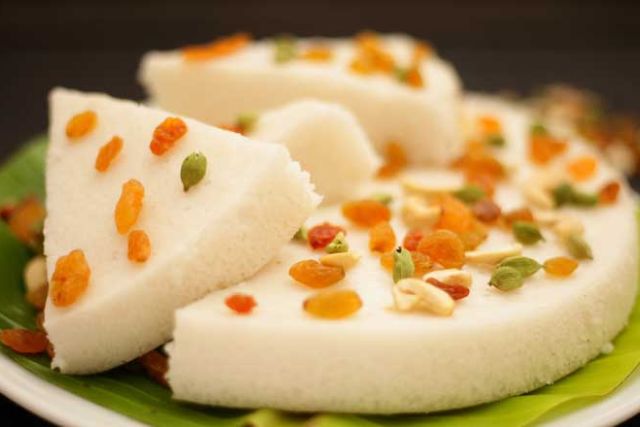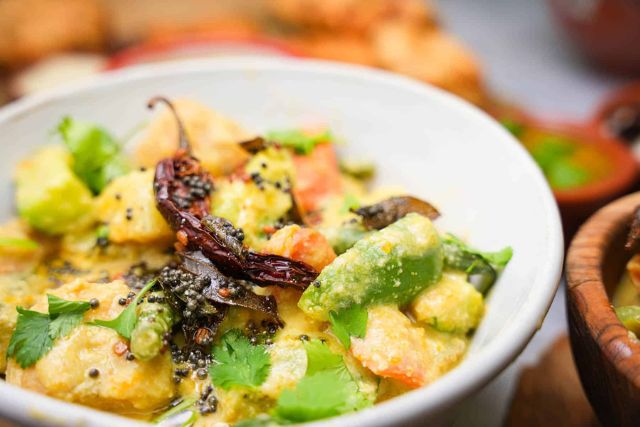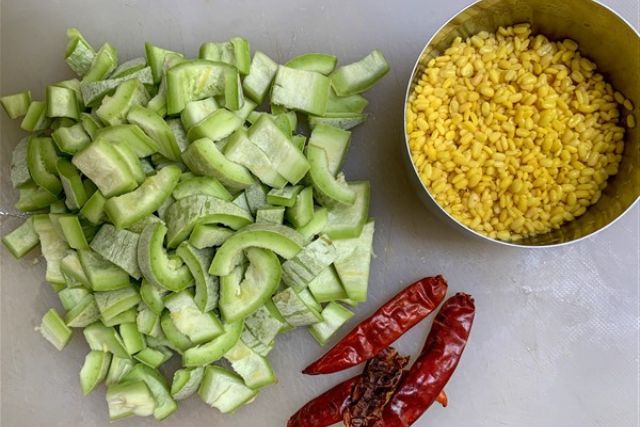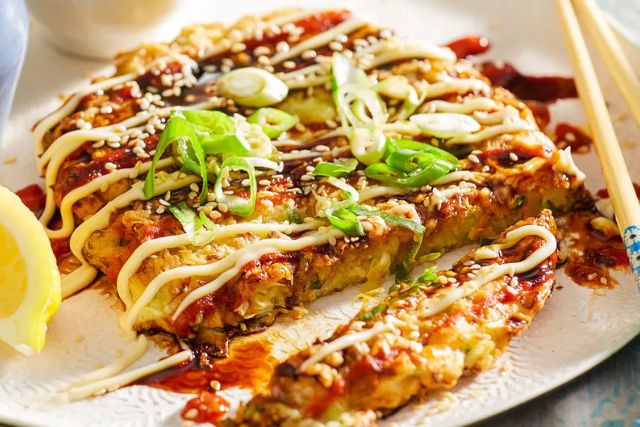Delicious Ganji Recipe : South Indian Rice Porridge
In the vast landscape of culinary delights, few dishes possess the intriguing blend of simplicity and profound nourishment like Ganji. This humble porridge-like dish, originating from South India, not only satiates hunger but also holds a special place in the hearts of those who cherish its comforting warmth and subtle flavors. In this comprehensive guide, we will delve deep into the essence of Ganji Recipe, exploring its origins, nutritional benefits, variations, and how you can recreate this wholesome recipe in your own kitchen.
Understanding Ganji Recipe : Origins and Cultural Significance
Ganji, also known as Koozh in Tamil, or Congee in other Asian cuisines, traces its roots back centuries in the southern regions of India, particularly Tamil Nadu. Historically, it was a staple food among rural communities and continues to be cherished for its simplicity and ability to provide sustenance even in challenging times. Traditionally made from rice, it serves as a go-to meal during fasting periods or when recovering from illness due to its easy digestibility and gentle nourishment.
Beyond its practical uses, Ganji Recipe embodies a cultural heritage that celebrates the connection between food and well-being. It symbolizes comfort, community, and the wisdom passed down through generations regarding the art of nourishing the body and soul with minimal ingredients.
Nutritional Benefits of Ganji Recipe
One of the most compelling reasons for Ganji’s enduring popularity is its nutritional profile. As a rice-based dish, it offers a wealth of carbohydrates, which serve as an excellent energy source. Moreover, the slow cooking process breaks down the rice, making it easier to digest and releasing essential nutrients that are readily absorbed by the body.
Ganji Recipe is also highly customizable, allowing for the addition of various ingredients such as lentils, vegetables, or even meat, depending on dietary preferences and nutritional needs. This versatility enhances its nutrient content, providing a balanced meal that can be adapted to meet specific health goals.
Ganji Recipe Variations: Exploring Regional and Personal Twists
While the basic recipe for Ganji involves simmering rice in water until it reaches a porridge-like consistency, the variations are as diverse as the regions that embrace it. Here are some popular adaptations:
- Millets and Grains: In recent years, there has been a resurgence of interest in using alternative grains like millets to prepare Ganji. These grains offer a higher nutritional profile, including more fiber and essential minerals, making them an excellent choice for those looking to enhance the dish’s health benefits.
- Spices and Flavorings: The addition of spices such as cumin, pepper, turmeric, and ginger not only enhances the flavor profile of Ganji but also contributes additional health benefits. These spices are known for their anti-inflammatory properties and digestive benefits, further boosting the dish’s nutritional value.
- Toppings and Garnishes: From fresh herbs like cilantro and curry leaves to crunchy toppings like roasted peanuts or fried onions, the choice of garnishes adds texture and depth to the Ganji experience. This allows for personalization based on individual taste preferences and regional influences.
How to Prepare Ganji Recipe : Step-by-Step Guide
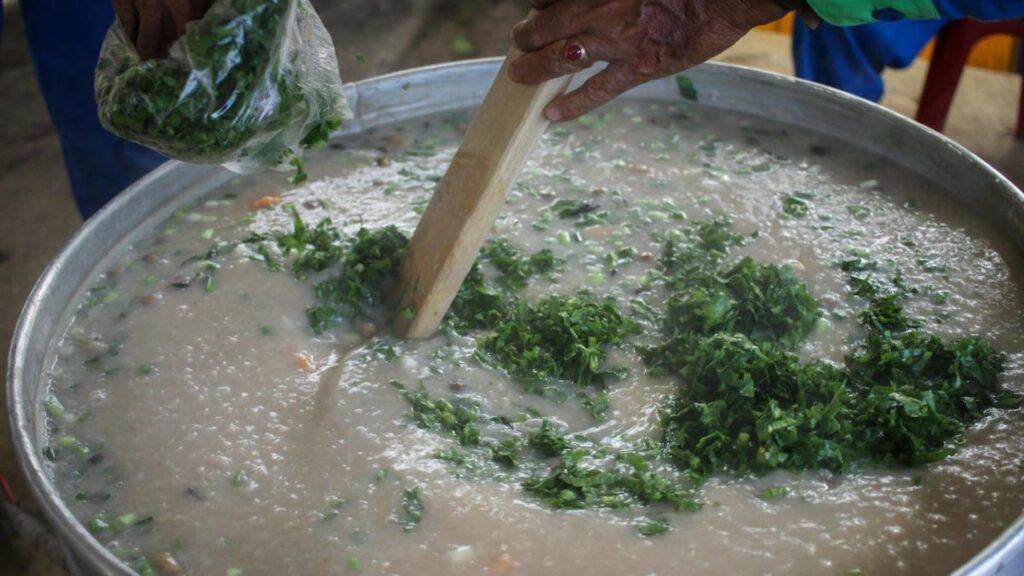
Now, let’s explore a basic recipe for preparing traditional Rice Ganji Recipe:
Ingredients:
- 1 cup rice (preferably short-grain or medium-grain)
- 6 cups water
- Salt to taste
Instructions:
- Rinse the Rice: Wash the rice thoroughly under cold water until the water runs clear. This helps remove excess starch and ensures a cleaner flavor.
- Boil the Water: In a large pot, bring 6 cups of water to a boil over medium-high heat.
- Add the Rice: Once the water is boiling, add the rinsed rice to the pot. Stir well to prevent clumping.
- Simmer: Reduce the heat to low and let the rice simmer, uncovered, stirring occasionally to prevent sticking. Cook for about 30-40 minutes or until the rice grains are fully cooked and the mixture has thickened to a porridge-like consistency.
- Seasoning: Add salt to taste and adjust the consistency by adding more water if desired.
- Serve: Remove from heat and let it cool slightly before serving. Garnish with your choice of toppings or enjoy as is for a comforting meal.
Embracing Ganji’s Timeless Appeal
Ganji represents more than just a simple dish; it embodies a culinary tradition that celebrates nourishment, simplicity, and cultural heritage. Whether enjoyed as a comforting meal on a rainy day or shared with loved ones during festive occasions, Ganji Recipe has a universal appeal that transcends geographical boundaries.
Frequently Asked Questions (FAQs) about Rice Ganji Recipe
What is Ganji?
Ganji, also known as Koozh in Tamil Nadu or Congee in other Asian cuisines, is a simple rice porridge dish. It’s typically made by simmering rice in water until it thickens to a smooth, porridge-like consistency. Ganji is known for its simplicity, comfort, and nourishing qualities, making it a popular choice, especially during fasting periods or for easy digestion.
Is Ganji healthy?
Yes, Ganji is considered a healthy dish. It primarily consists of rice and water, providing carbohydrates for energy. The slow cooking process breaks down the rice, making it easier to digest. Ganji can be enriched with additional ingredients like lentils, vegetables, or spices, adding to its nutritional value. It’s often recommended for its gentle nature, making it suitable for recovery from illness or as a light, filling meal.
How do you make Ganji Recipe?
To make Ganji, rinse rice thoroughly, then boil it in water until it reaches a thick, porridge-like consistency. The ratio of rice to water and cooking time may vary based on personal preference and desired consistency. Season with salt and optionally add spices or garnishes like fresh herbs or roasted nuts before serving. It’s a versatile dish that can be customized with different ingredients to suit individual tastes.
What are the variations of Ganji?
Ganji can be prepared with various grains besides rice, such as millets, which offer different textures and nutritional profiles. It can also include lentils, vegetables, or even meat, depending on regional preferences and dietary needs. Spices like cumin, turmeric, and ginger are commonly added for flavor and health benefits. Toppings such as fried onions, roasted peanuts, or fresh cilantro add texture and enhance the dish’s overall appeal.
Can Ganji be frozen and reheated?
Yes, Ganji can be frozen for later use. Allow it to cool completely before transferring it to airtight containers or freezer bags. When reheating, thaw overnight in the refrigerator or defrost in the microwave. Reheat gently on the stove, stirring occasionally to maintain a smooth consistency. Adjust the thickness with a little water or broth as needed, and season to taste before serving.


